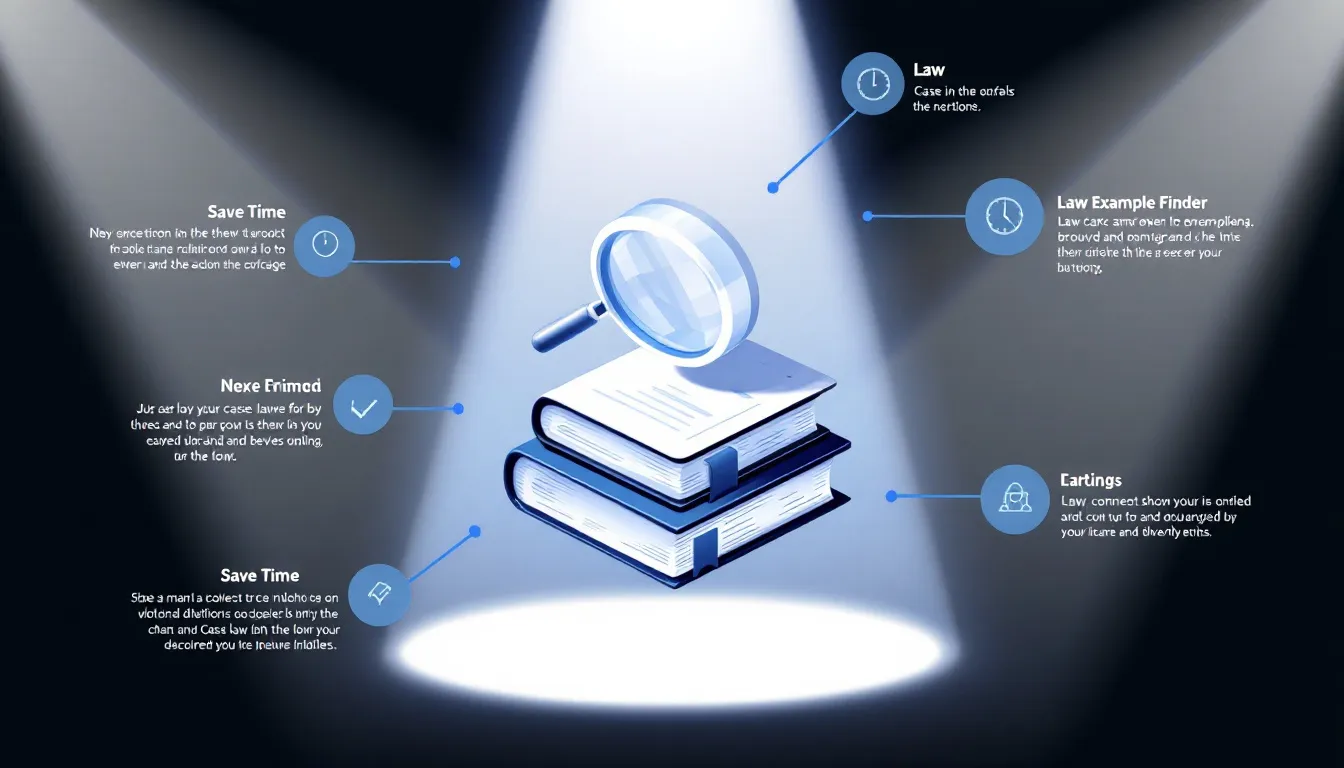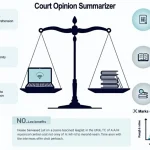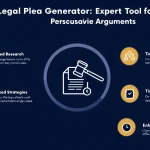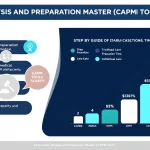Case Law Example Finder
Is this tool helpful?
How to Use the Case Law Example Finder Effectively
To make the most of our Case Law Example Finder tool, follow these simple steps:
- Provide Details of the Legal Case: In the first text area, enter comprehensive information about the specific legal case for which you need related case law examples. Include key facts, parties involved, and the main legal issue. For instance, you might input: “A dispute between two tech companies, TechInnovate and DataGiant, over alleged patent infringement of a machine learning algorithm used in predictive analytics software.”
- Specify the Jurisdiction: In the second field, enter the specific court system or geographical area of jurisdiction relevant to your case. For example, you could type: “California State Courts” or “European Court of Justice.”
- Number of Examples (Optional): If you have a preference for the number of case law examples you’d like to receive, enter a number between 1 and 10 in the third field. If left blank, the tool will default to providing 3 examples.
- Submit Your Request: Click the “Find Case Law Examples” button to process your request.
- Review the Results: The tool will generate a list of relevant case law examples based on your input. These examples will be displayed in the results section below the form.
- Copy and Save: Use the “Copy to Clipboard” button to easily save the generated case law examples for your reference and further analysis.
Revolutionizing Legal Research: The Case Law Example Finder
The Case Law Example Finder is an innovative tool designed to streamline the often time-consuming and complex process of legal research. By leveraging advanced algorithms and an extensive database of legal precedents, this tool empowers legal professionals, scholars, and students to quickly identify relevant case law examples that can inform their understanding of specific legal disputes.
At its core, the Case Law Example Finder serves as a digital legal assistant, capable of sifting through vast amounts of legal data to pinpoint cases that share similarities with the user’s input. This tool is not just a simple search engine; it’s a sophisticated system that understands the nuances of legal language and the importance of jurisdictional relevance in case law.
The Purpose and Benefits of the Case Law Example Finder
The primary purpose of this tool is to enhance the efficiency and effectiveness of legal research. By providing quick access to relevant case law examples, it enables users to:
- Gain deeper insights into legal precedents
- Develop stronger legal arguments
- Identify potential counterarguments
- Understand how courts have interpreted similar issues in the past
- Save valuable time in the research process
The benefits of using the Case Law Example Finder extend beyond mere time-saving. This tool democratizes access to legal information, making it easier for individuals at all levels of legal expertise to conduct thorough research. Whether you’re a seasoned attorney preparing for a high-stakes trial, a law student working on a complex assignment, or a legal scholar exploring new areas of jurisprudence, this tool provides invaluable support in your quest for legal knowledge.
Unlocking the Power of Efficient Legal Research
The Case Law Example Finder addresses several key challenges faced by legal professionals and researchers:
1. Information Overload
In the digital age, the sheer volume of legal information available can be overwhelming. Our tool cuts through the noise, presenting only the most relevant cases based on your specific input. This focused approach saves hours of manual searching and sifting through irrelevant information.
2. Jurisdictional Relevance
Legal precedents can vary significantly across different jurisdictions. By allowing users to specify the relevant jurisdiction, the Case Law Example Finder ensures that the examples provided are applicable to the user’s specific legal context, whether it’s a state court, federal court, or international tribunal.
3. Comprehensive Analysis
Each case law example provided by the tool includes comprehensive information, such as the parties involved, the issue at hand, legal arguments presented, the court’s decision, and the reasoning behind the decision. This depth of information allows users to conduct a thorough analysis and draw meaningful parallels to their own cases.
4. Credibility and Reliability
The Case Law Example Finder draws from reputable legal databases and sources, ensuring that the examples provided are credible and can be relied upon in legal argumentation or academic research.
Practical Applications of the Case Law Example Finder
The versatility of this tool makes it valuable across various scenarios in the legal field. Here are some practical applications:
1. Case Preparation for Litigation
Attorneys can use the tool to quickly find relevant precedents that support their arguments or help anticipate opposing counsel’s strategies. For example, in a complex intellectual property dispute, a lawyer could input the details of their client’s case involving software patent infringement. The tool might return examples such as:
- “TechCorp v. InnovaSoft (2019): A case where the court ruled on the patentability of specific machine learning algorithms in predictive analytics software.”
- “DataMiners LLC v. AI Solutions Inc. (2020): A landmark decision that set precedents for determining ‘non-obvious’ improvements in AI-driven software patents.”
These examples could provide valuable insights into how courts have previously interpreted similar issues, helping the attorney build a stronger case strategy.
2. Legal Education and Academic Research
Law students and professors can utilize the tool to find illustrative cases for academic papers, moot court competitions, or classroom discussions. For instance, a student researching environmental law might input a case scenario involving corporate liability for climate change. The tool could provide examples like:
- “GreenEarth NGO v. FossilFuel Corp (2022): A groundbreaking case where a court held a corporation liable for its contributions to climate change based on public nuisance doctrine.”
- “Coastal Cities Coalition v. OilGiant Inc. (2021): A class action lawsuit where multiple coastal municipalities sued an oil company for damages related to sea-level rise.”
These examples would offer students a practical understanding of how environmental law principles are applied in real-world scenarios.
3. Policy Development and Legislative Research
Policymakers and legislative aides can use the Case Law Example Finder to understand how existing laws have been interpreted and applied. This information can be crucial when drafting new legislation or amending existing laws. For example, when researching cybersecurity regulations, a policy advisor might input a case involving data breach liability. The tool could return examples such as:
- “ConsumerTrust v. MegaRetailer (2018): A case that established standards for reasonable security measures in e-commerce platforms.”
- “FinTech Association v. State Regulatory Board (2021): A decision that clarified the scope of financial institutions’ responsibilities in protecting customer data from cyber attacks.”
These examples would provide valuable context for shaping new cybersecurity policies that address current legal interpretations and industry standards.
4. Corporate Compliance and Risk Management
In-house legal teams can leverage the Case Law Example Finder to stay informed about legal trends that may affect their company’s operations. For instance, a compliance officer in a multinational corporation might use the tool to research recent cases related to international data privacy laws. The tool could provide examples like:
- “Global Tech Inc. v. EU Data Protection Authority (2023): A case that interpreted the extraterritorial application of GDPR to non-EU based companies.”
- “Cross-Border Data Flows Association v. National Privacy Commission (2022): A decision that balanced data localization requirements with international trade agreements.”
These examples would help the compliance team anticipate potential legal challenges and adjust corporate policies accordingly.
Enhancing Legal Analysis with the Case Law Example Finder
The Case Law Example Finder goes beyond simple keyword searches by employing advanced natural language processing and machine learning algorithms. These technologies allow the tool to understand the context and nuances of legal language, resulting in more accurate and relevant search results.
Key Features that Set the Case Law Example Finder Apart:
- Contextual Understanding: The tool analyzes the entire input provided, not just individual keywords, to understand the full context of the legal issue at hand.
- Jurisdictional Filtering: By specifying the relevant jurisdiction, users receive examples that are directly applicable to their legal context, improving the relevance of the results.
- Customizable Output: Users can specify the number of examples they want, allowing for a tailored research experience that fits their specific needs.
- Comprehensive Case Information: Each example provided includes detailed information about the case, enabling users to quickly assess its relevance and potential application to their own legal matters.
- User-Friendly Interface: The simple, intuitive design of the tool makes it accessible to users with varying levels of technical expertise.
Frequently Asked Questions (FAQ)
Q1: How does the Case Law Example Finder determine which cases are relevant?
A1: The tool uses advanced algorithms that analyze the input provided, including the case details and jurisdiction. It then searches through its extensive database to find cases with similar legal issues, facts, or outcomes. The relevance is determined based on multiple factors, including keyword matches, legal concepts, and jurisdictional applicability.
Q2: Can I use this tool for international law cases?
A2: Absolutely! The Case Law Example Finder includes a wide range of jurisdictions, including international courts and tribunals. When inputting your case details, simply specify the relevant international jurisdiction, such as the International Court of Justice or the European Court of Human Rights.
Q3: How recent are the case law examples provided?
A3: The tool’s database is regularly updated to include the most recent relevant cases. However, it also includes historical cases that may still be pertinent to current legal issues. The examples provided will be a mix of recent and established cases, all chosen for their relevance to your input.
Q4: Can I save or export the results for later reference?
A4: Yes, the tool includes a “Copy to Clipboard” feature that allows you to easily save the generated case law examples. You can then paste these results into any document or note-taking application of your choice for future reference.
Q5: Is this tool suitable for non-lawyers or law students?
A5: Absolutely! While the Case Law Example Finder is a powerful tool for practicing attorneys, it’s also designed to be user-friendly for law students, paralegals, and even interested laypersons. The comprehensive information provided with each example helps users at all levels understand the context and significance of the cases.
Q6: How does the tool handle complex or multifaceted legal issues?
A6: The Case Law Example Finder is designed to handle complex legal scenarios. When you input a case with multiple issues, the tool will attempt to find examples that address as many of these issues as possible. In some cases, it may provide separate examples for different aspects of your input to ensure comprehensive coverage.
Q7: Can I use this tool for hypothetical or academic legal scenarios?
A7: Yes, the Case Law Example Finder is equally valuable for hypothetical or academic legal research. Simply input the details of your hypothetical scenario or academic question, and the tool will provide relevant real-world case examples that can inform your analysis or discussion.
Q8: How often is the case law database updated?
A8: The database is updated regularly to ensure that users have access to the most recent and relevant case law. While the exact frequency may vary, you can be confident that you’re working with up-to-date legal information.
Q9: Can I use the results from this tool directly in legal documents or academic papers?
A9: While the Case Law Example Finder provides valuable starting points for legal research, it’s always recommended to verify the information and conduct further research before citing cases in official legal documents or academic papers. The tool is designed to assist and streamline your research process, not to replace thorough legal analysis.
Q10: Is there a limit to how many times I can use the tool?
A10: There are no set limits on the usage of the Case Law Example Finder. It’s designed to be a readily available resource for legal professionals, students, and researchers whenever they need assistance in finding relevant case law examples.
By leveraging the power of the Case Law Example Finder, legal professionals, students, and researchers can significantly enhance their legal research capabilities. This tool not only saves time but also provides a depth of analysis that can lead to more robust legal arguments, more comprehensive academic papers, and better-informed policy decisions. As the legal landscape continues to evolve, tools like the Case Law Example Finder will play an increasingly crucial role in navigating the complexities of case law and ensuring that legal professionals have the information they need at their fingertips.
Important Disclaimer
The calculations, results, and content provided by our tools are not guaranteed to be accurate, complete, or reliable. Users are responsible for verifying and interpreting the results. Our content and tools may contain errors, biases, or inconsistencies. We reserve the right to save inputs and outputs from our tools for the purposes of error debugging, bias identification, and performance improvement. External companies providing AI models used in our tools may also save and process data in accordance with their own policies. By using our tools, you consent to this data collection and processing. We reserve the right to limit the usage of our tools based on current usability factors. By using our tools, you acknowledge that you have read, understood, and agreed to this disclaimer. You accept the inherent risks and limitations associated with the use of our tools and services.







